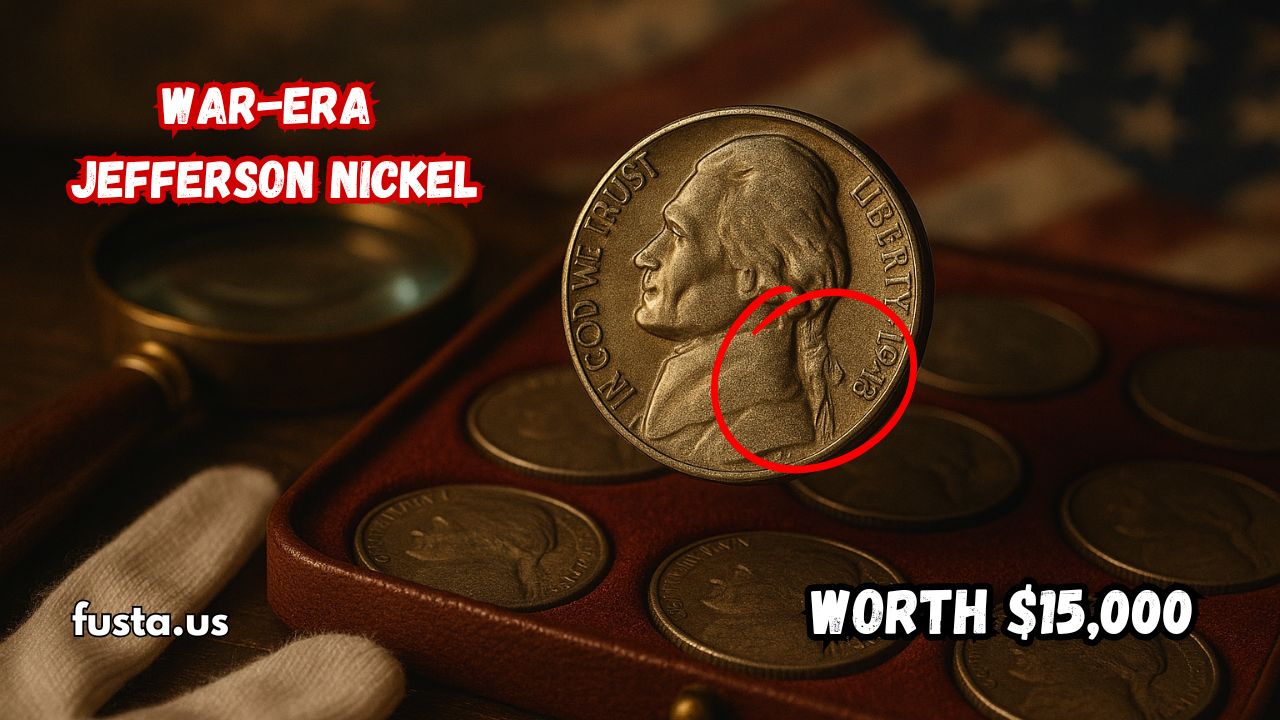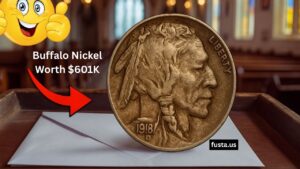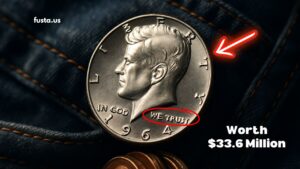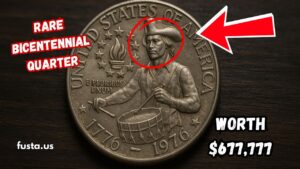Not all coins are just spare change — some carry a piece of history and a surprising value. The War-Era Jefferson Nickel, minted during World War II, is one such treasure.
What looks like a regular five-cent coin hides a story of wartime sacrifice, unique metal composition, and rare minting errors that have turned some of these coins into collector’s items worth thousands of dollars.
This guide explains its history, value, key dates, and how you can identify one in your own collection.
The Birth of the Jefferson Nickel
The Jefferson nickel was first released in 1938, replacing the Buffalo nickel. It featured a portrait of Thomas Jefferson on the front (obverse) and his historic home, Monticello, on the back (reverse).
The design remained mostly unchanged for decades, but the 1940s brought dramatic changes due to global conflict.
Wartime Changes to the Jefferson Nickel
When the United States entered World War II, nickel metal became a critical resource for producing weapons, tanks, and other military equipment.
To save nickel for the war effort, the U.S. Mint changed the composition of the coin in mid-1942.
From mid-1942 to 1945, the Jefferson nickel was made from an alloy of:
- 35% silver
- 56% copper
- 9% manganese
This gave the coins a slightly different color and wear pattern compared to regular nickels.
A large mint mark (P, D, or S) was placed above the dome of Monticello to help people identify these silver nickels easily — a unique feature never seen before on nickels.
Why War-Era Jefferson Nickels Are Valuable
Three main reasons make these coins special:
- Silver Content – Even in worn condition, the silver makes them worth more than face value.
- Historical Significance – They represent America’s wartime sacrifices.
- Limited Minting Years – Only produced between 1942 and 1945.
Collectors especially seek nickels that are:
- In high-grade condition
- Have full steps (sharp detail on Monticello’s steps)
- Feature rare minting errors
The Rare 1943/2 Overdate Error
The most famous error is the 1943/2-P overdate nickel. This happened when a 1942 die (used to stamp coins) was accidentally re-used in 1943.
The faint “2” under the “3” makes this coin incredibly rare. High-grade examples can sell for $15,000 or more.
War-Era Jefferson Nickels
| Year & Mint Mark | Key Feature or Error | Estimated Value (High Grade) |
|---|---|---|
| 1942-P | First silver alloy, large mint mark | $75–$200 |
| 1943/2-P | Overdate error | $2,000–$15,000+ |
| 1943-P Full Steps | Sharp Monticello steps detail | $1,000–$3,000 |
| 1944-D | Common silver wartime coin | $20–$100 |
| 1945-S | Last year of silver composition | $20–$80 |
How Collectors Spot Valuable Jefferson Nickels
Coin experts look for:
- Large mint marks above Monticello’s dome
- Clear full steps detail
- Specific wartime dates (1942–1945)
- Rare errors like the 1943/2 overdate
Even worn coins can fetch a good price if they’re rare enough.
Can You Still Find Them Today?
Yes! While most valuable ones are in collections, war nickels still appear in:
- Old coin jars
- Bank rolls of nickels
- Estate sales and flea markets
Why This Nickel’s Story Matters
The war-era Jefferson nickel isn’t just a coin — it’s a reminder of how even the smallest everyday items were changed to help a nation during wartime. It symbolizes unity, sacrifice, and history in your pocket.
The War-Era Jefferson Nickel is more than just old change — it’s a collectible that blends history, value, and rarity.
From its unique silver composition to rare minting errors such as the 1943/2 overdate, this remarkable coin tells a captivating tale that appeals to collectors, historians, and anyone passionate about American wartime heritage.
Whether you’re searching coin jars at home or buying from a dealer, knowing the key dates, errors, and features can help you spot a potential treasure worth far more than five cents.
FAQs
What years were the silver Jefferson nickels made?
From mid-1942 through 1945 during World War II.
How can I tell if my Jefferson nickel is silver?
Look for a large mint mark (P, D, or S) above Monticello’s dome on the back.
What’s the most valuable Jefferson nickel?
The 1943/2-P overdate error in high-grade condition is among the most valuable.




